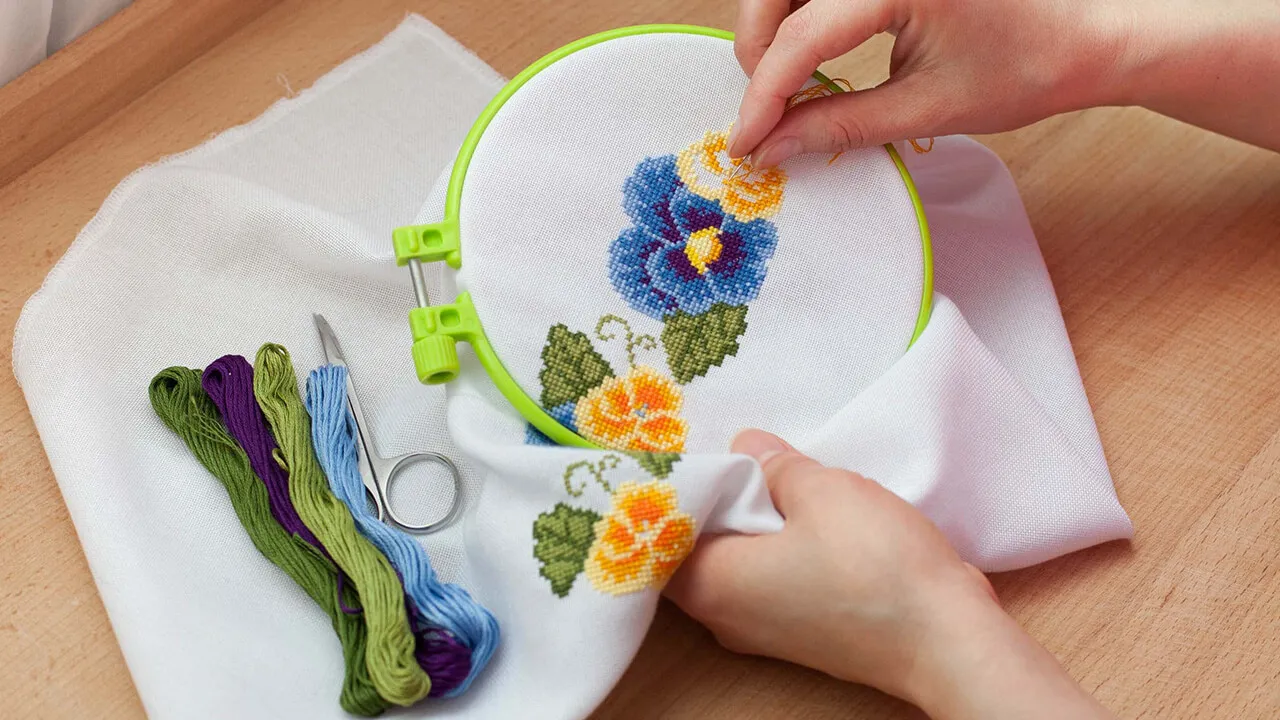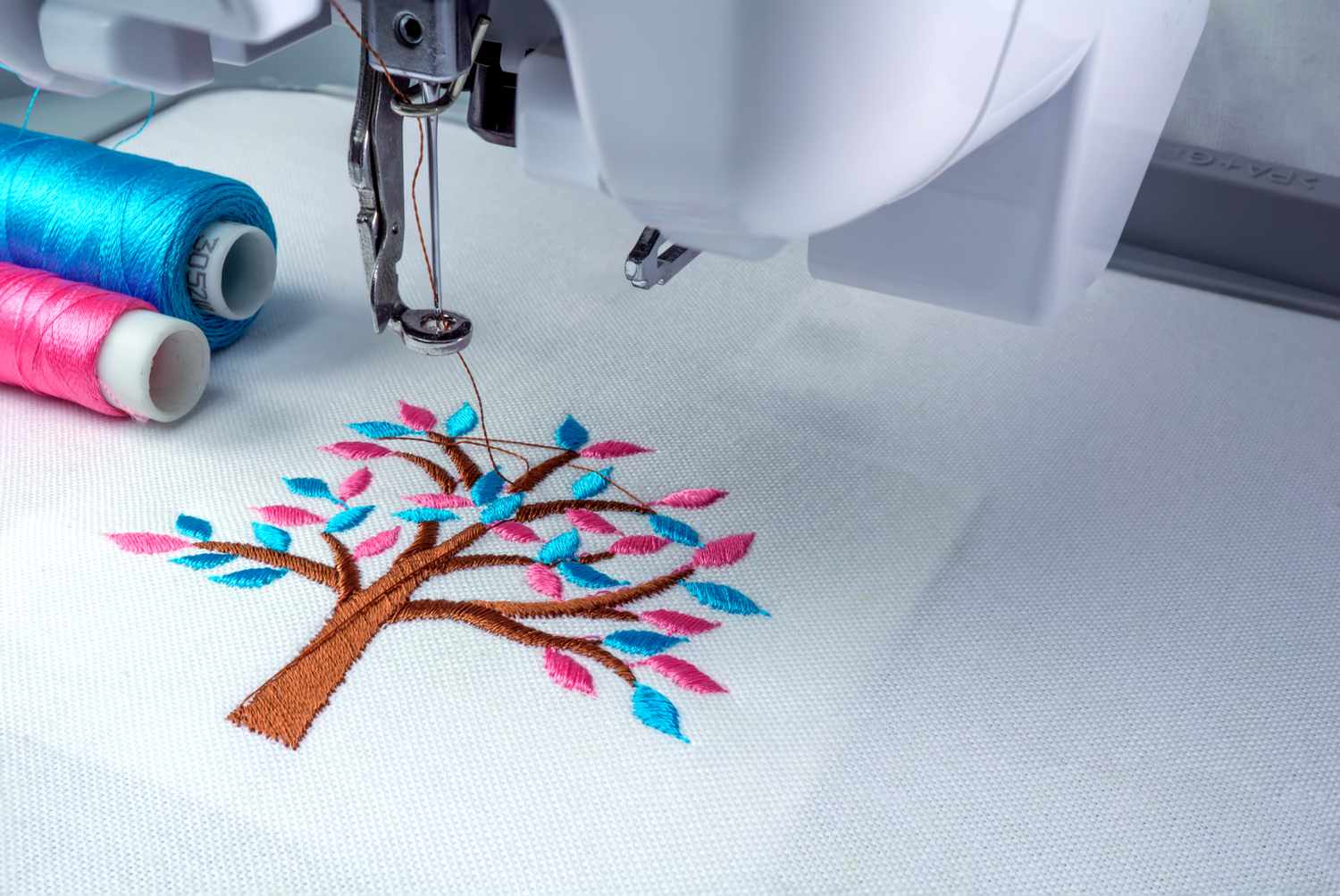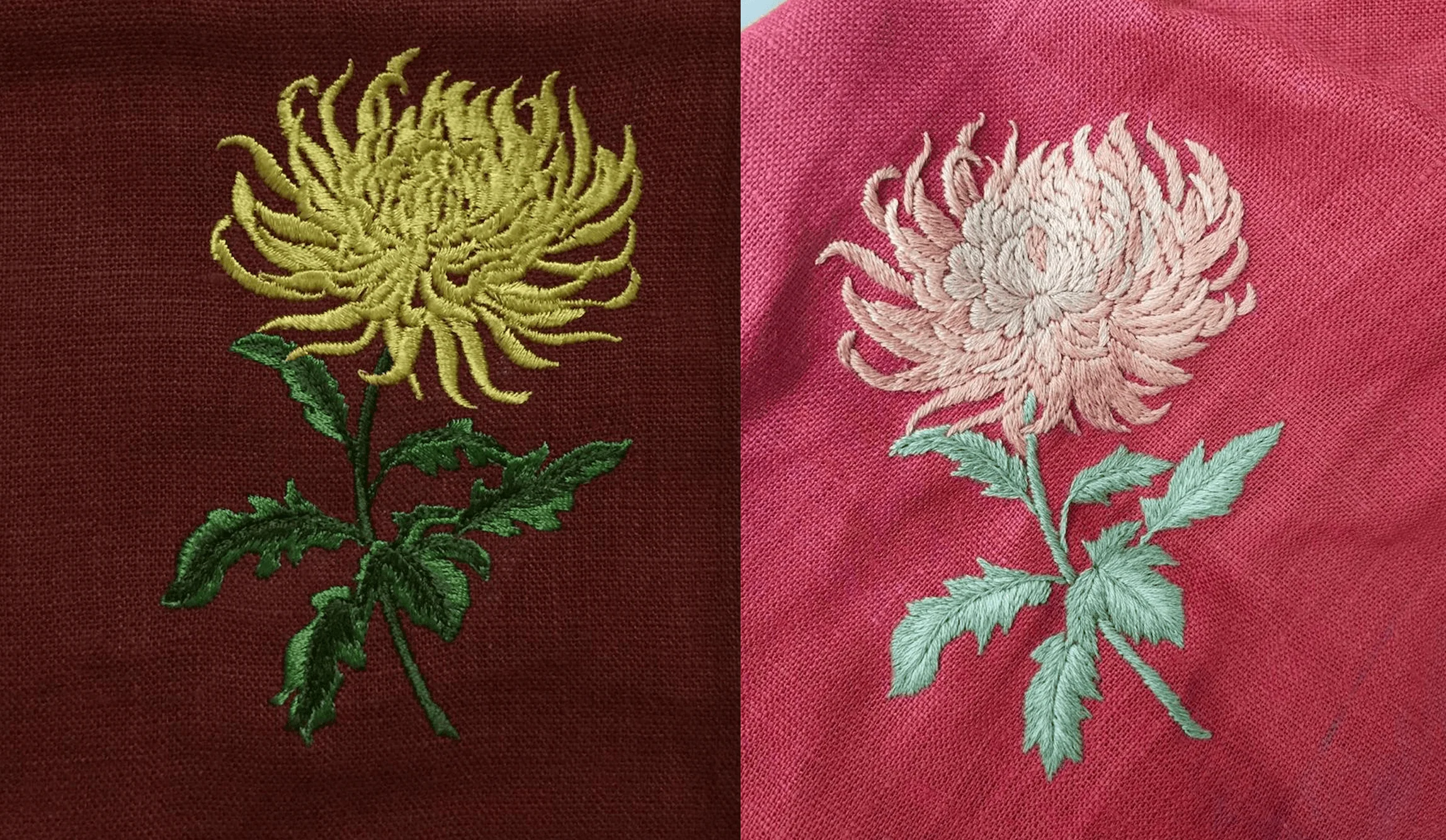Embroidery is one of the oldest and most admired forms of decorative stitching. It’s used to personalize clothing, create artwork, and design home decor pieces that carry both creativity and skill. In today’s world, embroidery can be done in two main ways – hand embroidery and machine embroidery.
While both methods involve thread and fabric, the process, results, and purpose behind each are very different. In this guide, we’ll break down the key differences between hand and machine embroidery, their advantages, disadvantages, and how to choose which one best suits your crafting goals.
What Is Hand Embroidery?
Hand embroidery is the traditional art of stitching patterns, letters, or images by hand using a needle and thread. Each stitch is made manually, giving the work a unique texture and character.

Crafters often use embroidery hoops to keep fabric tight while they stitch, allowing for better precision. Common hand embroidery techniques include cross-stitch, satin stitch, backstitch, French knots, and chain stitch. Here’s our latest guide about all the embroidery stitches.
Hand embroidery kits – like those available at The Embroidery Kits – provide all the essential materials such as needles, Aida fabric, threads, and easy-to-follow instructions for beginners and hobbyists.
What Is Machine Embroidery?
Machine embroidery uses a sewing or embroidery machine to create designs automatically. Instead of being stitched by hand, the design is programmed into the machine, which follows the pattern precisely.

Modern embroidery machines can produce complex, multi-colored designs in a fraction of the time it takes to do by hand. They’re widely used for commercial purposes, especially for logos, uniforms, monograms, and large-scale textile production.
Hand vs Machine Embroidery: The Main Differences
Let’s explore how hand embroidery and machine embroidery compare in terms of appearance, time, skill level, cost, and purpose.
1. Craftsmanship and Uniqueness
Every hand-stitched piece carries the personality and creativity of the artist. Even if two people follow the same pattern, no two hand-embroidered pieces will look exactly alike. The small imperfections add character and authenticity.
Machine embroidery, on the other hand, produces uniform results every time. It’s perfect for businesses or projects that require consistency and replication, such as company logos or mass-produced designs.
2. Time and Effort
Hand embroidery is time-intensive. Depending on the design complexity, a small piece can take several hours or even days to complete. However, many crafters find the process relaxing and therapeutic.
Machine embroidery is much faster. Once the design is programmed, the machine can stitch it in minutes. It’s ideal for those who need quick results or large quantities of embroidered items.
3. Skill Level
Hand embroidery requires patience and practice. Beginners can start with simple stitches and gradually move on to more complex designs. It’s an excellent way to improve focus, hand-eye coordination, and creativity.
Machine embroidery requires technical knowledge of the machine and software. Once mastered, it becomes a powerful tool for efficiency and precision.
4. Design Flexibility
Hand embroidery allows unlimited freedom. You can modify designs mid-project, experiment with colors, and add personal touches easily. Each creation feels more personal and artistic.
Machine embroidery limits flexibility during stitching – once the design starts, it’s difficult to make changes. However, digital tools allow users to preview and adjust designs before stitching begins.
5. Cost
Hand embroidery is more affordable to start with. A beginner kit includes everything needed – fabric, needles, threads, and instructions. It’s a low-cost, high-satisfaction craft.
Machine embroidery requires a larger investment upfront. Embroidery machines and software can be expensive, but for professionals or small businesses, the cost often pays off through speed and scalability.
6. Texture and Finish
Hand embroidery produces a soft, textured finish that feels natural and three-dimensional. The layers of stitches give the fabric life and depth.
Machine embroidery offers a smooth, uniform surface. The stitches are tighter, and the finish is cleaner, making it ideal for professional or industrial applications.
Advantages of Hand Embroidery
- Offers creative freedom and personalization
- Great for relaxation and mindfulness
- Affordable for beginners
- Portable and easy to start anywhere
- Produces unique, one-of-a-kind pieces
Hand embroidery is perfect for DIY lovers, crafters, and hobbyists who enjoy slow, mindful creativity. It’s often used in beginner embroidery kits, unique embroidery kits, and handmade gifts.
Advantages of Machine Embroidery
- Fast and efficient for large projects
- Consistent results with precise stitching
- Great for logos, uniforms, and commercial use
- Can handle complex designs with ease
- Durable and professional-looking finish
Machine embroidery is ideal for businesses or crafters who want accuracy, speed, and repeatability in their work.
When to Choose Hand Embroidery?
If you’re new to embroidery or enjoy crafting as a hobby, hand embroidery is the perfect choice. It lets you learn various stitches, build patience, and enjoy the creative process.
It’s also ideal for decorative projects such as wall art, home decor, and personalized gifts. Many crafters use the embroidery kits beginner-friendly sets to get started, as they include everything needed in one box.
When to Choose Machine Embroidery?
If you run a small business or plan to sell embroidered products, machine embroidery is the better option. It ensures consistent results, professional finishing, and high output.
It’s commonly used for branding, clothing customization, and corporate merchandise. Machine embroidery offers excellent scalability and uniformity.
Hand vs Machine Embroidery: Which One Lasts Longer?
Durability depends on the type of thread, stitch density, and fabric used. Machine embroidery often uses tightly packed stitches, making it slightly more durable for everyday wear or washing.
However, well-done hand embroidery can also last for years if cared for properly. Gentle washing, proper framing, and fabric protection help preserve the texture and color.
Can You Combine Hand and Machine Embroidery?
Absolutely. Many crafters use machine embroidery to create the outline and add hand embroidery details for a personal touch. This hybrid method combines precision with creativity, resulting in stunning mixed-media designs.
Conclusion
The choice between hand embroidery and machine embroidery depends on your goals, time, and purpose.
If you value creativity, relaxation, and individuality – go for hand embroidery.
If you need speed, precision, and professional replication – machine embroidery is the way to go.
Both have their place in the modern world of stitching, and both continue to inspire creators in unique ways.
We celebrate the artistry of hand embroidery with a collection of best embroidery kits, kits for beginners, kits for adults, and unique embroidery kits – designed to make every stitch enjoyable and rewarding.

